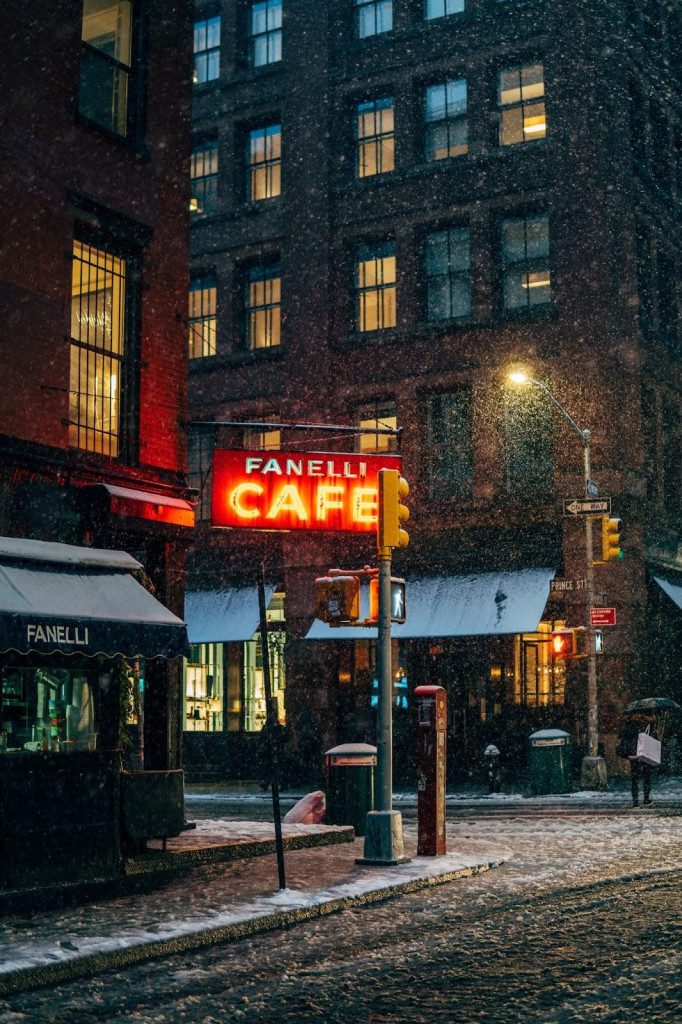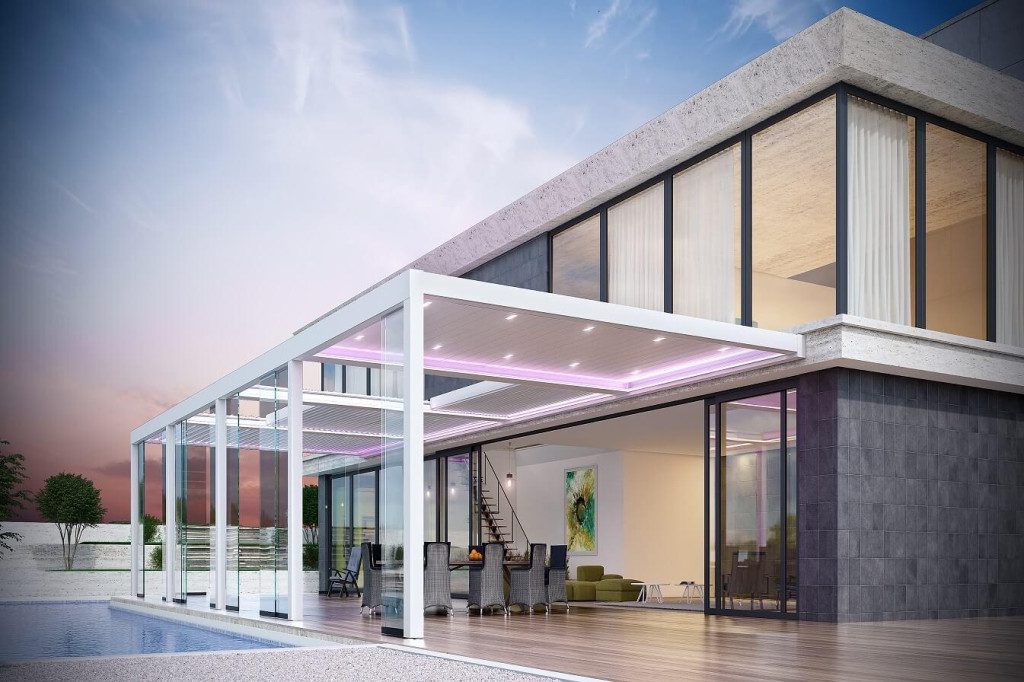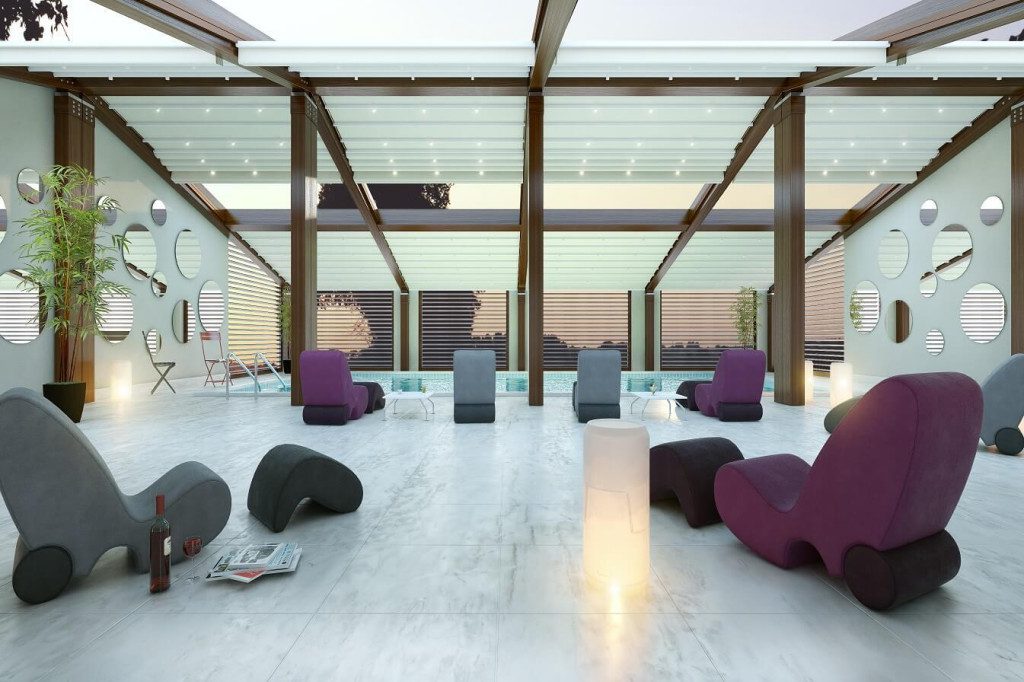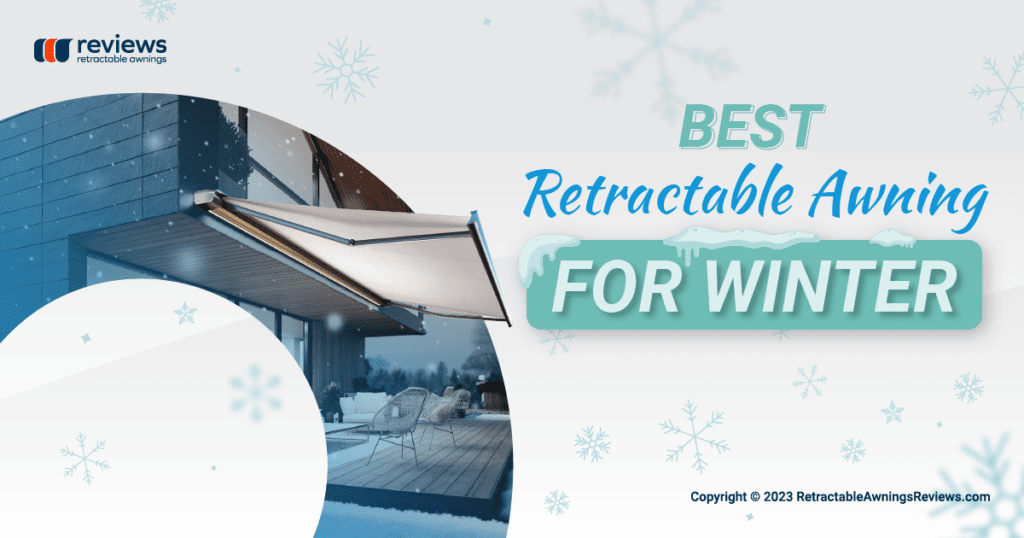This year is undoubtedly rolling by quickly – it’s already October, and the winter months are approaching fast.
With the weather change, many businesses and homeowners start thinking about creative ways to prepare their properties for the cold temperatures. They are looking for ways to warm up their home or upgrade their patio while protecting their outdoor furniture from frequent light rain and drizzles.
That’s why I decided it would be helpful to discuss the role of retractable awnings in winter and the advantages they offer. In this blog post, you can find more detailed information, such as what is the best retractable awning for snow.

Best awnings for winter
Fixed (permanent) awning structures
Until now, most people used to purchase fixed (or non-retractable) awning structures to protect their outdoor spaces. In all honesty, high-quality permanent shelters do an excellent job handling weather conditions such as heavy rain, hail and snow. A proper installation guarantees stability even during most high wind speeds.
Disadvantages to consider
Consider the usability of the structure throughout the entire year. While metal or plastic roof-like constructions can provide protection from the sun and harmful UV rays, they don’t have excellent cooling capacity.
Imagine trying to enjoy your afternoon coffee outdoors, and all you get is the heat blocked by the plastic or acrylic cover and the stale air trapped beneath it. It doesn’t sound fresh, right?
A significant disadvantage of fixed awnings is their lack of functionality. Once installed, they will always be there. Unless, of course, you de-install it. The idea is that the structure is permanent and will cover the area morning, noon and evening during snow, hail, rain and sun. That’s where retractable awnings come in.
Retractable patio awnings
Retractable awnings are the modern and more functional versions of permanent covers. These semi-permanent structures give you control over their operational mechanism. You can seamlessly extend and retract the awning’s canopy manually or automatically, thus adjusting its length (projection) to create shade or light rain protection.
Manufacturers that produce high-quality awnings typically avoid Chinese components, fabric and motors and instead use European-designed, certified, engineered and manufactured production materials:
- Corrosion-resistant forged 6063 aluminum for stress-bearing parts
- Marine grade 316 stainless steel for assembly components
- Sunbrella, Dickson or Para solution-dyed acrylic fabrics for the awning canopy OR
- Mehler or Serge Ferrari fabrics are suitable for pergola covers.
Why I recommend using solution-dyed acrylics
While some awnings’ covers are made of synthetic materials such as vinyl, I highly recommend using solution-dyed acrylics for several reasons.
First, they have the greatest sun protection and UV protection qualities among all other options. Not only do they add more shade to your outdoor living space, but they are also very breathable materials. This means you have the benefit of cool fresh air at all times, unlike PVC (vinyl), which is not breathable.
The second advantage of such fabrics is their durability. The additional water-repellent coating can improve the fabric’s water-resistant qualities, making it suitable for light rain. A prominent feature of the acrylic fabric is its mold and mildew resistance, which is a key benefit when discussing outdoor awning maintenance.
Why choose retractable awnings?
Quality awnings are a reliable way to upgrade your outdoor living space or an area for customers at your hotel, restaurant or shop. You can use them all year round, even when it is freezing outside. Let’s see how exactly.
They are a flexible solution.
As previously mentioned, retractable awnings are the improved and more flexible version of traditional permanent structures. You can adjust them as you see fit depending on the current weather conditions, which allows you to keep them in one piece in case of violent storms.
You can extend the canopy over the covered area to increase privacy or retract it to enjoy a more open view.
Control types
Depending on your preference and taste, you can choose from two types of retractable awning operational mechanisms. Rotating a removable manual crank can extend or retract the manual canopy. Manual mechanisms are typically preferred by people who need small retractable awnings.
The second type is the motorized awning. It has a tubular electric motor that allows automatic extension and retraction without manual action. You only need to press a button: either on a wall switch, on the remote control or on a mobile app.
But can retractable awnings be completely automated? The answer is yes, but only if you invest in a motorized model. You can also purchase additional sensors that send a signal to the motor in case preset weather conditions are present.
For example, you can install a rain sensor to ensure the frame and canopy fall back into the cassette or under the hood cover if a storm you don’t know about approaches. Another useful sensor is a motion or wind sensor. Although some retractable awnings withstand wind of a certain speed, it’s advisable to automate the retraction for strong winds and gusts.
You can make the most of sunny days in winter.
While fixed covers will cast a shadow and make your patio even colder during winter, retractable awnings can help warm up your house and reduce electricity bills.
Think about it – rather than blocking the sun’s rays on those few sunny days, you can retract your awning and let the sun shine through your windows and onto your patio or deck. Letting natural sunlight in can warm up your indoor areas and cause you to use less energy for powering your air conditioning system.
What is the most effective awning for the winter?
The most suitable winter awnings can vary for different individuals and businesses. There are a few important factors to consider, for example, if you’re looking for awnings that can withstand snow. Or maybe the winter season in your area is not that harsh, and you only need light rain protection.
So let’s see the three main variables people opt for when choosing a winter awning.
Condition 1: You want to protect your outdoor area during snowfall
By definition, retractable awnings are structures installed on an exterior wall, soffit or roof using spring-loaded arms without additional support. That said, it’s normal to assume their load-handling capacity is limited. And since snowfall can reach a significant weight per cubic foot, we’ll need to scratch out these models as a feasible option.
So, what’s the solution you’re looking for? A retractable louvered roof pergola. Of course, another option is a pergola with a rotating louvered roof. Whatever you choose, you can rest assured that such a sturdy structure has a strong frame and louvers that will withstand specific amounts of snow.
The best awning company thinks of essential details, such as slope angles and built-in gutters, to aid the melting snow drain away from decks and patios. Such pergola structures are often combined with sliding side glass doors, enclosing the entire outdoor space and protecting it from the elements (wind, hail, snow, etc.) and allowing the customer to heat the space in the winter and air-condition the space in the summer.

Condition 2: You want heavy rain, wind and hail protection (not snow)
I know that winter conditions vary between geographical locations. That’s why you might not get lots of snow, but you want a functional outdoor area during heavy rain, strong wind, or even if it starts hailing. What would do the job for you are weighty and robust Mehler or Serge Ferrari fabrics, recommended by industry experts.
These waterproof fabrics are attached to sturdy pergola frames anchored to the ground or a wall. They are incredibly durable and protect your patio, porch or deck during unfavorable weather conditions. However, they won’t be able to withstand snowfall, so it’s recommended to retract them back to safety so they won’t billow (bulge) and get damaged.

Condition 3: You don’t need to cover your outdoor space during winter
Perhaps you want a structure to provide shade in the summer that won’t get ruined constantly being outdoors in winter.
If that’s the case, a lateral arm retractable awning is the solution you’ve been looking for. Retract the awning fabric to protect the structural elements from heavy rain, snow and high wind. A full-cassette model or an additional hood cover is a worthwhile investment for protecting your awning in the long run.
With a retractable model, you get the added benefit of reducing energy bills during winter. Retraction allows you to uncover your windows, walls and floors and let them absorb the sunshine, thus warming up your indoor rooms.

Protecting your retractable patio awning
The durability of your awning is directly linked to your ability to maintain and protect it properly. However, maintenance requirements differ between different models.
For example, if you’ve installed a motorized louvered roof pergola, there’s little to worry about. However, that’s not the case with awning fabrics. As seen above, you must consider certain limitations to make the most of your purchase. If you opt for quality PVC fabrics, you’ll only need to retract them in case of heavy snowfall. In the case of solution-dyed acrylics and less structural support, it’s safer to keep them inside a full cassette or a hood cover when it rains heavily, or strong wind gusts begin and certainly prior to snowfall.
